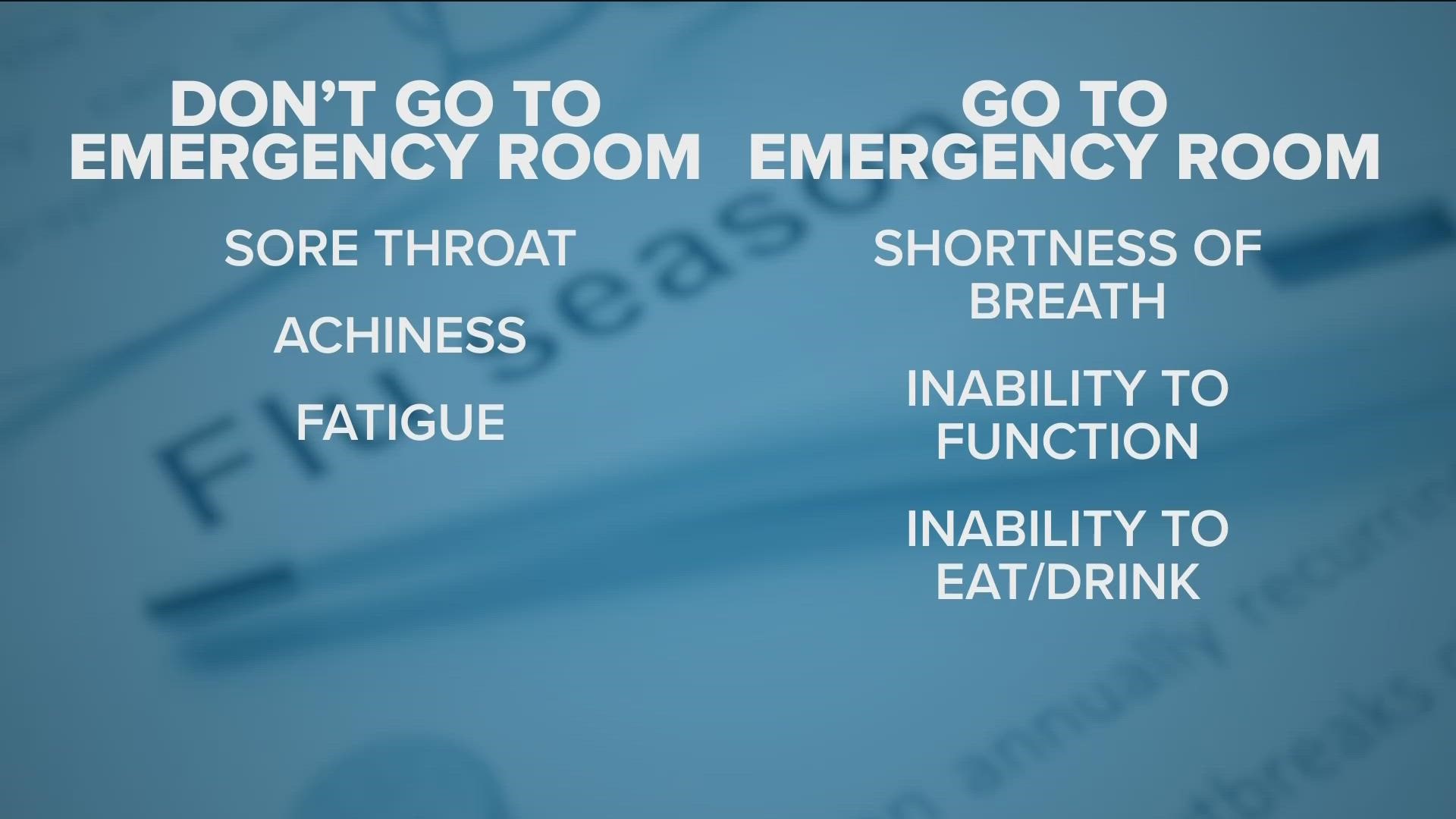TOLEDO, Ohio — We're right in the middle of the busiest time of the year for the flu. Many people will end up going to the emergency room with flu-like symptoms. But when is the right time to visit the ER -- to stretch your dollar.
Dr. Brian Kaminski, an emergency room physician and also vice president of quality and patient safety for ProMedica said many people make a trip to the emergency room with flu-like symptoms because those symptoms are similar to other illnesses like COVID-19 or pneumonia.
We asked why those trips to the E-R are so expensive for the uninsured and underinsured people.
"That's a costly proposition for emergency rooms to be everything to everybody 24 hours a day, seven days a week, and 365 days a year," Kaminski said. "And as a consequence, the more expensive part of that care is built in to the cost associated with that care."
To save money during the flu season, Kaminski said if you have a sore throat, achiness, or fatigue, don't go to the emergency room. But if those symptoms get worse, like shortness of breathe, an inability to function, or an inability to eat and drink, then you could consider seeking care at the E-R.
But here's a reality check: When it comes to the flu, hands of medical professionals at the ER will be tied.
"In general we say that the treatment is supportive in nature. We treat the symptoms and there isn't really a lot that we do to treat the underlying disease," Kaminski said.
To stretch your dollar consider an urgent care, retail care, teledoc or family doctor for medical issues that are what Kaminski calls "emergent" but not "urgent."
Kaminski said the average person thinks they'll get more specialized care at the ER and while he says that's true, for something like the flu, that trip to the emergency room will end up being a lot more expensive than seeing a primary care physician.
More from WTOL:

